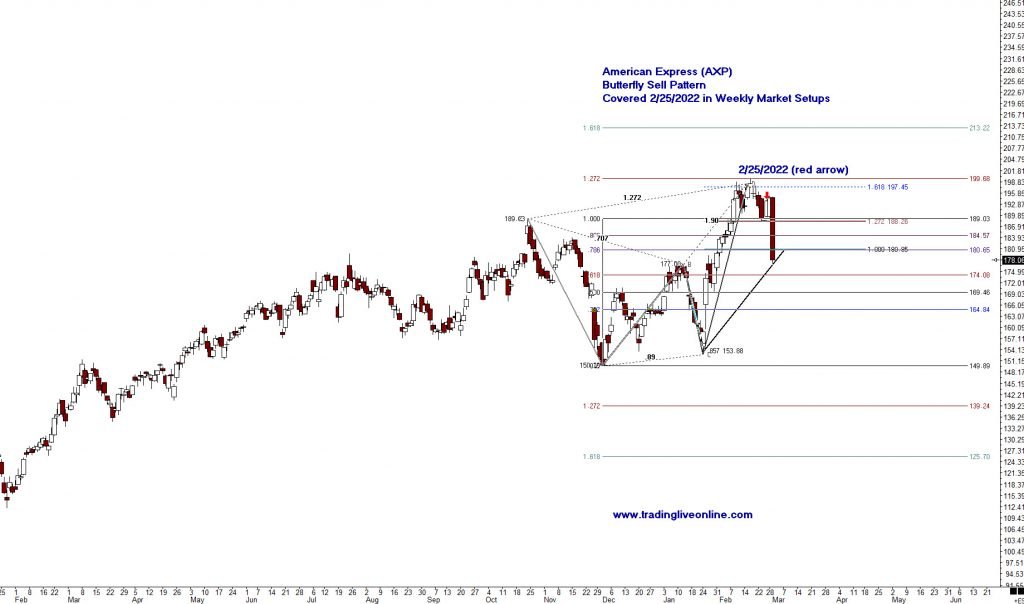Here’s my breakdown of the trading patterns from my appearance on Synergy Traders #36.11: Master Yourself, Master Your Trades with Leslie Jouflas, CMT
Target Practice
By Leslie Jouflas
There are probably at least a thousand ways to trade, especially day trading methods, in particular for the S&P Emini.
The good methods that I am familiar with and use myself all have one thing in common, they all play for targets. They never use an open ended exit that is decided based upon the emotions of the trader. Of course it goes without saying that any good method will use excellent money management.
The good traders do not get caught up in looking back and tormenting over how much they “could” have or “should” have gotten from a trade. Quite the opposite, the methods used for good trading, even on the shortest of time frames and for the smallest targets are going to be tested and the trader will know the optimum win/loss percentage for the pattern being traded.
Most traders know they will not get 100% wins. They do know that if they can trade a good percentage of the trades that are available that have a high win/loss ratio and play for the specific targets that have been tested, they know they will be profitable over time.
I like to think of my trading as going in and taking pieces of a move. I like to use patterns that I know have a high/win loss ratio and ones that I can apply very good trade management to.
I like to make a set of rules for each pattern I trade that tells me what the trigger into the trade is, how much the risk is, where the profit targets are and how to move the stop if it is not a full exit. I never like to go into a trade without knowing where my exits are.
I think one of the biggest mistakes traders can make is just “watching” to see what price does and then try and make a decision about where to exit. The trader is leaving themselves open to a lot of emotional decision making as price is moving either for them or against them.
Setting goals, such as, “I would like to make “x” amount per day trading the S&P emini can be an excellent way to shift thinking to trading for targets rather than for trying to always catch “the big move”. “The big move” just does not happen that often. I believe I heard it said that something like 90% of traders are chasing after a move that only occurs 10% of the time. That is a very interesting statement; I may be off on those percentages just a little, but not by much. When you think about that, could that possibly account for why so many traders can not make a profit trading and especially day- trading?
What if you were one of the 10% of traders that could consistently find a method that yielded small but reasonable profits from what the market is doing 90% of the time on a consistent basis by trading for targets rather than for a big move that may or may not occur that day? If you could net 3-5 points a day trading the S&P emini that would not be a bad annual return. Do you see many swings during the day that would make that possible?
Once you find a pattern or two that can yield those results with very good trade management then figure out how and when to add on a contract and this will increase your yield without stretching for more. Floor traders many times are faced with taking trades they don’t necessarily want and many times are playing for small targets maybe .25 – .50 a point or even scratching the trade quickly, these small profits can add up especially if you have low commissions.
Take a look and do some basic math on trading for some attainable targets on a daily basis and learn to not concern yourself with every tick the market makes with out you. Learn to have patience and wait for that one setup that can get you close to your daily goal. I believe part of maturing as a trader is to understand what you are doing based on your method and realizing that you can not get every piece of the market. Relieve yourself of the burden and unnecessary mental stress of looking back on charts and thinking “oh look at that move, if I just would have gotten in here and gotten out there I would have made…” That is nonsense and doesn’t have anything to do with what will make you a consistently profitable trader.
Here is a little test you can do to see if you have emotions involved with any particular market or stock. First look at a chart of a market that you trade regularly, do you feel a pang of “oh if I just…I could have…I should have”? Do you feel emotions with that, be honest. Now look at a chart of a market that you never trade, like lumber, no one really trades lumber do they? Do you feel any emotional pull whatsoever looking at a market that you do not follow? You probably don’t. Remember this distinct difference in emotions in the future and use that to re-center yourself when feel emotions pulling at you.
Knowing your game and knowing when to go in and take your piece with the least amount of risk is what will give you steady profits over time, of course that is not to mean that every trade will be a winner, but if you keep the losses small and play for reasonable targets, get out and forget about that trade, you will come out a winner over time and move yourself into an elite category of traders!

While trading the markets, there are times when the little child within us shouts: “I don’t want to wait. I want it now.” But sustained profitability takes time. In his book, “Enhancing Trader Performance,” Dr. Brett Steenbarger argues that superior performance develops in three stages: Initiation, Development, and Mastery. Many novice traders dream of mastering the markets and achieving extreme wealth; they want to make huge profits now, but it is necessary to go through the initiation and development stages before achieving mastery. Why is it necessary to recognize the stage you are in?Eventual success in a challenging endeavor, such as trading, requires motivation. And cultivating the proper motivation requires that one set specific, realistic goals. Setting specific goals is essential for achieving high levels of performance. They allow for direct feedback. You know exactly where you stand and what you need to do next. Setting goals that are unrealistic usually leads to disappointment. For example, you may aim for a 20% return on your trading account, but if that is not a realistic objective, you end up failing, feeling disappointed, and giving up. If you set more realistic goals, however, you feel satisfied when you achieve them. You feel optimistic and ready to tackle the next goal in earnest. By realistically acknowledging where you are at in your stage of development as a trader, you can set goals that are consistent with your abilities, achieve them, and feel you are making steady progress.
Let’s review the three stages of development and what you should do in each. In the initiation stage of development, a novice trader explores the new field of trading and enjoys the process of discovery. Trading is pursued mostly because it is fun. In addition, many traders, who end up pursuing a career in trading, usually experience early success. For example, in our Innerworth interviews with seasoned traders, many reported that they became hooked on trading while realizing easy profits in a bull market. They did well, had fun, and thought they had special talents. These experiences of success set the foundation for their later mastery. During the initiation stage of development, the main goal should be to have fun with the new field. A novice trader should not focus on profits, but on managing risk. Trades should be viewed as practice trades. The goal at this stage is to develop an intuitive feel for the markets, not to make substantial profits.
The hard work of mastering the markets begins in the development stage. During this stage, a trader should work hard to develop specific trading skills and to develop a basic sense of competence. This is where a more serious commitment to the field begins. The trader in the development stage concentrates on learning different strategies and trying them out. A great deal of basic knowledge and skills is gathered, just as one would study any new profession. At this stage, it is still not wise to focus on performance goals, such as achieving a 20% return. It’s useful to distinguish performance goals from learning goals. For novice traders in the development stage, it is useful to consider setting learning goals rather than performance goals. A learning goal is more modest and can be achieved more easily. It involves breaking down the larger goal of eventual mastery into specific steps that are doable, and rewarding oneself after each step is accomplished. For example, a learning goal may be stating, “I’m going to study for 30 hours a week to learn a new trading technique.” The specific goal will not immediately lead to the larger goal of making a 20% profit, but it is easy to achieve, will lead to personal satisfaction upon completion, and in the long run, will contribute to the final stage of mastery.
During the mastery stage, traders try to reach their full potential. Reaching one’s highest possible level of performance is a primary motivator. At this stage, a trader may seek out the guidance of a teacher, mentor, or coach. Trading consumes most of their time. Intense focus is the key. The trader at this stage has already developed the basic skills required to trade. Now it is just a matter of actually working diligently to achieve specific financial goals, such as a 20% return on one’s trading account.
Whatever your stage of development, it is vital to set goals consistent with your current abilities. Mastering the markets is possible; it’s just a matter of setting the right goals and feeling good about the steady progress you make every trading day.
I show my technical analysis for trading patterns in Gold, Silver, FCX, and Steel Stocks that are moving! Leslie Jouflas, CMT. View today’s video from ‘Your Daily 5’, from www.stockcharts.com.
- « Previous
- 1
- 2
- 3
- 4
- Next »
